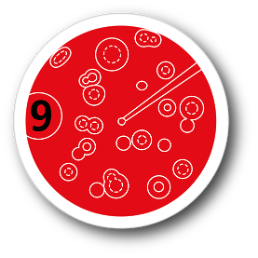- In the systems studied by Agroscope, what are the transmission routes and bottlenecks that control the spread of the resistome between humans, animals, plants and the environment?
- What diagnostic methods and monitoring programmes can be used to detect existing and new pathogens as well as antibiotic-resistant bacteria and toxic or otherwise undesirable substances an early stage, and how can safety concepts be adapted to production, processing and distribution?
- What role is played by the soil, organic fertilisers and surface water, as well as products of the agriculture and food sector that are dependent on the aforementioned factors, in the formation of clinically relevant ABR?
- Bearing in mind biofilms in particular, what preventive measures can be taken to reduce the introduction and spread of ABR and persistence along the food value chains?
- Through what novel (biological and physical) measures can pathogenic microorganisms and their toxins be reduced on agricultural products and foods? Are, for example, low-energy electrons (e.g. ebeam technology) or protective cultures, or the combination of both, suitable for achieving this?
- What scientific data (e.g. from challenge tests) must be generated for the assessment of existing and new microbial risks (ABR, persistence, new pathogenicity factors, viruses)?
- How can traditional Swiss cheeses made from raw and thermised milk meet the constantly increasing food-safety legislation of the export markets whilst preserving their typicity and authenticity (AOP)?
- How can we prevent toxic or otherwise undesirable substances from entering foods directly, or indirectly via animal feed?

Human food-borne illnesses occur worldwide and can lead to high economic losses. In addition to the incidence of new pathogens, special attention should be paid to the increasing occurrence of antiobiotic-resistant and persistent bacteria in animal and plant food chains. The agriculture and food sector probably plays an important role in the formation this sort of resistance.
The Swiss federal government is tackling the problem of antibiotic resistance with a broadly supported national strategy (‘StAR’). On the one hand, the agriculture and food sector is exploring how existing and new pathogens as well as antibiotic-resistant bacteria can be detected at an early stage, and how safety concepts can be adapted in the production, processing and marketing spheres. On the other hand, it is asking itself how the entry and spread of antibiotic resistance and persistence along selected value chains can be measured, what preventive measures can be used to limit this spread, and how to reduce pathogenic microorganisms as well as their toxins (e.g. mycotoxins) on agricultural products and foods. The health risks are to be detected and quantified by means of risk analyses.
Agroscope strongly supports the safety of food and agricultural products, and hence their exportability, with research results, challenge tests, surveys, and risk-based recommendations. What’s more, the official Feed Inspectorate helps prevent chemical pollutants and other residues in, and the adulteration of, products from the agriculture and food sector.
Scientific Objectives and Research Questions
Research Projects
OverviewFurther Information





